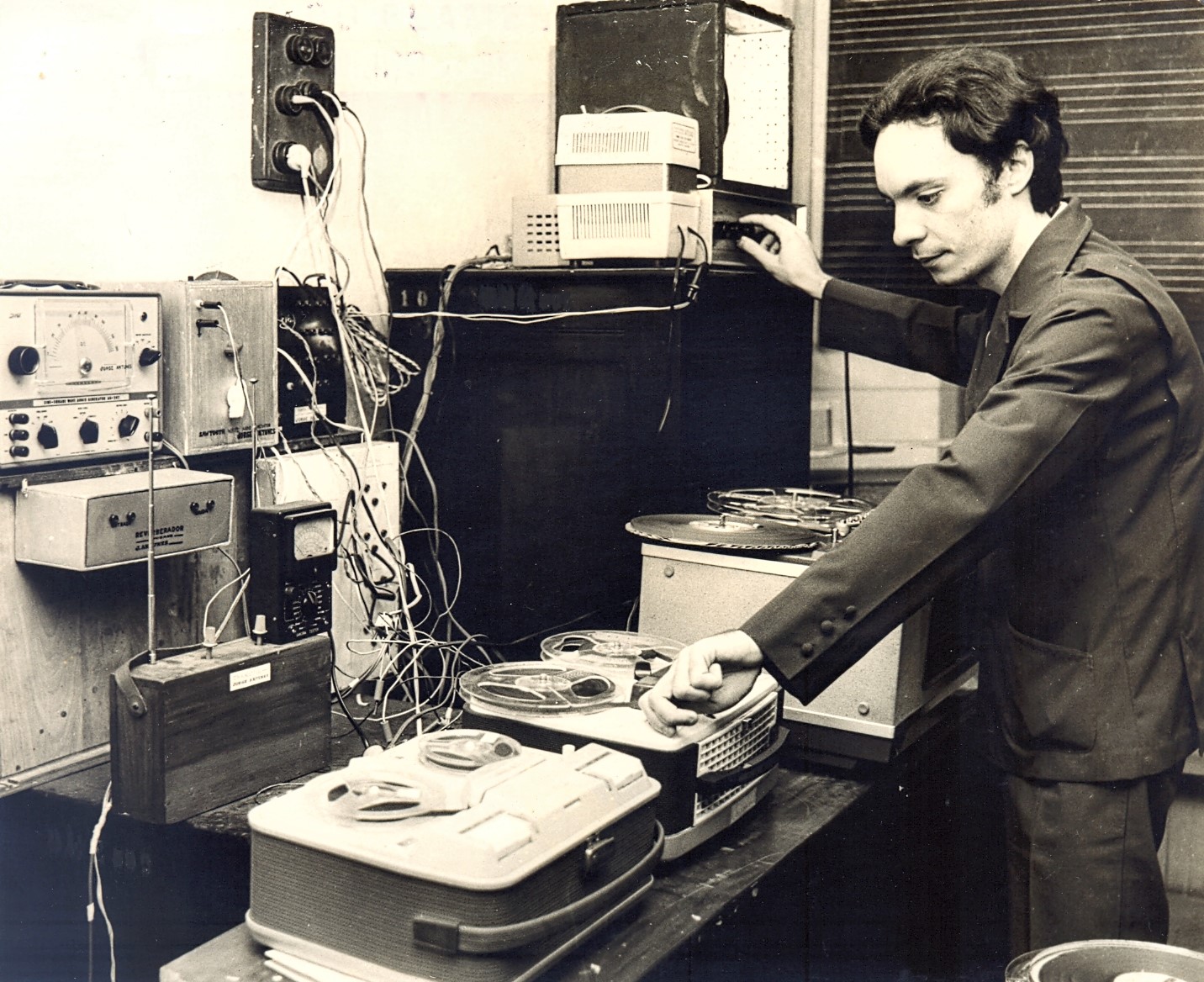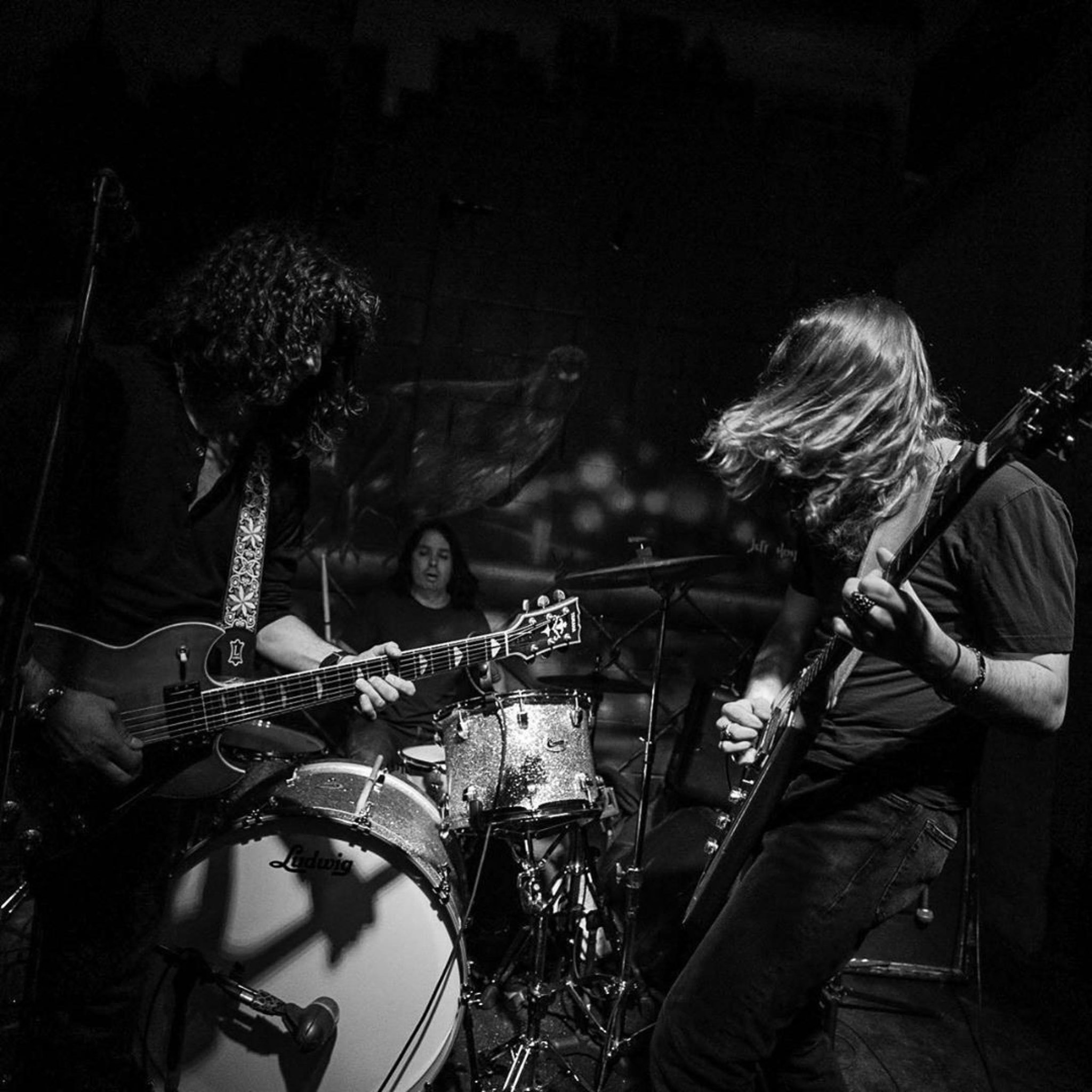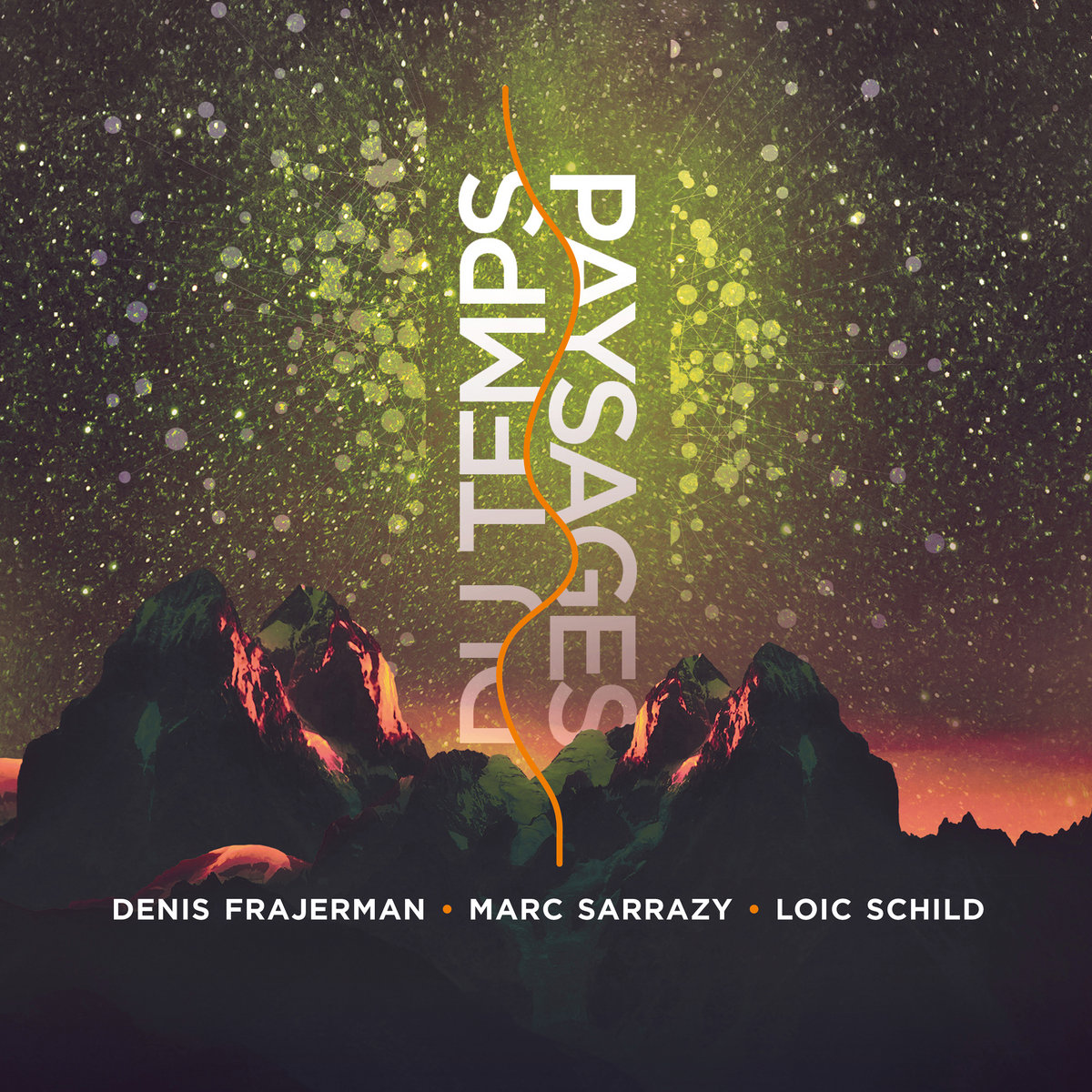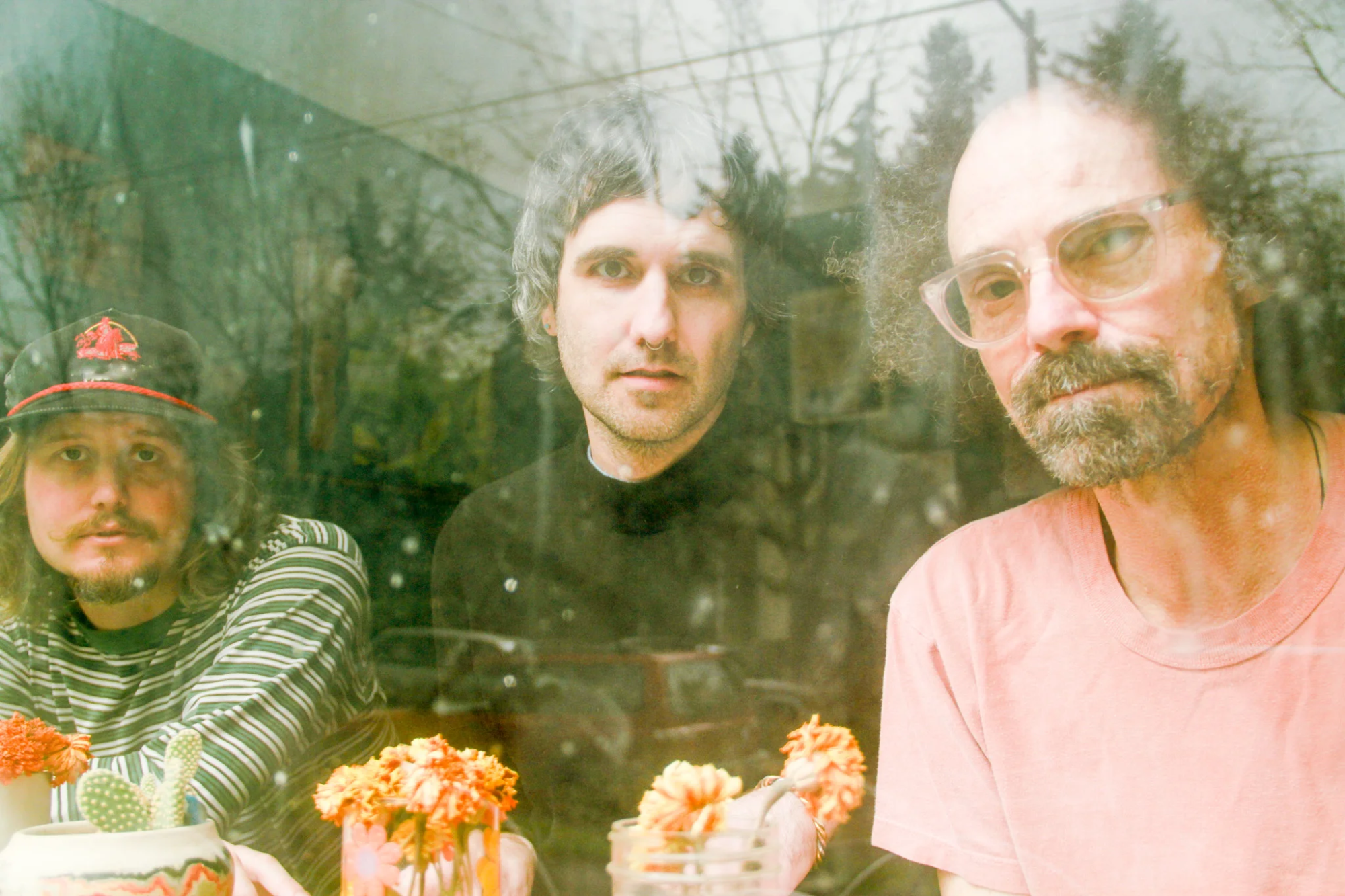Jorge Antunes | Interview | “Música Eletrônica”
Jorge Antunes is one of the most important composers of electroacoustic music from Latin America.
Jorge Antunes was born in Rio de Janeiro in 1942. He began his musical studies in 1958 and in 1960 joined the National School of Music of the University of Brazil (current UFRJ), in the violin class of Prof. Carlos de Almeida. In 1964 began the course of composition and conducting in the same school, studying with Henrique Morelembaum, José Siqueira and Eleazar de Carvalho. Simultaneously he followed the course of composition of Guerra Peixe in Pró-Arte of Rio de Janeiro. He already constructed generators, filters, modulators and other equipment as early as in 1961.
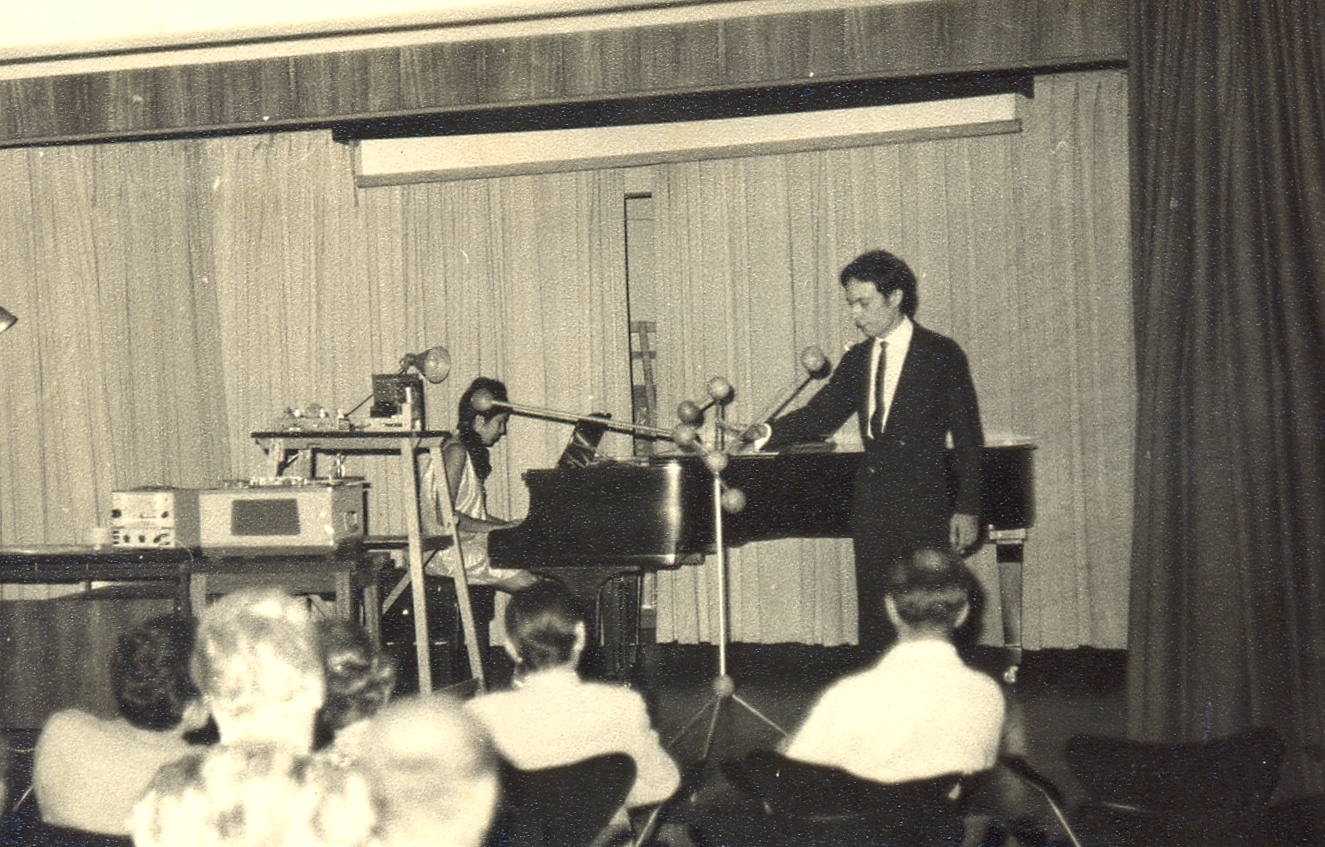
“I continued and continue to this day to be heavily influenced and inspired by visual elements”
Where and when did you grow up? Was music a big part of your family life? Did the local music scene influence you or inspire you to play music?
Jorge Antunes: My father, Carlos Antunes, was a painter and antique dealer. His oil paintings, usually landscapes and seascapes, influenced my first compositions when I started studying the violin. I was 14 years old and soon started, as a self-taught, to compose pieces for solo violin. They were simple, youthful pieces that tried, with melodies, to interpret the melancholy that I saw in the landscapes. Despite having abandoned this way of composing in 1958, I continued and continue to this day to be heavily influenced and inspired by visual elements.
My mother had studied piano when she was single. But she never played the piano again after she got married.
My taste for classical music developed because my father had a rich collection. Thus, my childhood ears were always immersed in Beethoven, Vivaldi, Brahms, Bach, Mahler, Prokofiev, Debussy, Kreisler and others.
The graphic and plastic arts were and continue to be important in my work. Since I was a child, influenced by my father, I painted and dedicated myself to the plastic arts, while studying the violin and composing pieces for violin and singing and piano. I started to participate in the National Salons of Fine Arts, the Salão de Abril at MAM and the National Salons of Modern Art. In the visual arts salons I attended, in the 1960s, also young artists Rubem Gerchman, Roberto Magalhães, Caciporé Torres and Antônio Dias also debuted. From 1961 I started making electronic music and mixing artistic manifestations. Between 1963 and 1965 I exhibited my “Ambiente I”: a precursor work of the “installation” category, which had not yet received that name. It was a cube measuring 4 meters on an edge, into which the public entered barefoot, and used vision, touch, taste and smell, to the sound of electronic music.
At that time, I projected myself in Rio de Janeiro in two areas: music and visual arts. I started teaching at the Villa-Lobos Institute: it was the first electroacoustic music course held in Brazil. From then on, the greatest opportunities began to emerge in the musical area, but I stopped doing plastic arts in 1968 when I had to leave Brazil after AI-5 (Institutional Act number 5, enacted by the military dictatorship, which began to persecute, torture and arrest professors and left-wing leaders).
Abroad, in postgraduate courses in Music and winning numerous composition competitions, I began to express my graphic and plastic talent in my own scores. The drawings, symbols and new notations that I started to create and use meant that, even today, many people put pages of my scores on the wall, like pictures.
Furthermore, having created the chromophonic technique of composition, developing the Theory of Correspondence between Sounds and Colors, my music is always very visual, inspired by visual images. When I make or listen to music, I always paint or draw pictures in the virtual space of my mind.
When did you begin playing music? What was your first instrument? Who were your major influences?
My instrument was the violin. As a child, I got emotional and cried when I heard Pablo de Sarasate’s ‘Gypsy Airs’. Since I was a little boy, already at the age of 7, at Christmas I wrote letters to Santa Claus, asking for a violin. I insisted with my father, telling him that I wanted to study the violin. But the poor family could not afford the instrument. Only in 1955, when I turned 13, did my father give me a violin. In his professional antiquarian business, he traded one of his fine opaline lamps for a violin. And the surprising thing is that it was an 18th-century author’s violin, from the School of Brescia: a Maggini. This violin is now with one of my sons, a violinist. My mother then enrolled me in a private music school, the Curso de Música Santa Cecília, where I started taking classes with Professor Arethuza de Mello.
In 1956, at the age of 14, with only one year of studying the instrument, I began to compose, as a self-taught, pieces for solo violin and violin and piano. My influence at that time was J.S. Bach.
In 1958, I joined the Music School of the University of Brazil, currently the Federal University of Rio de Janeiro, in the class of violinist Carlos de Almeida, who, in addition to being an excellent violin teacher, was also a composer of seresta music. I continued to compose, but was influenced by Carlos de Almeida and also by Villa-Lobos.
“I developed two antagonistic paths in musical composition”
Tell us about your studies at the Escola de Música da Universidade Federal do Rio de Janeiro which you started in 1959.
The course started in 1958, with violin classes and theoretical subjects (Music Theory, Harmony, History of Music, Musical Prosody, Musical Acoustics), but was not of higher education. The School of Music, in Rio de Janeiro, despite being integrated into the University, with its higher-level courses, offered a previous, mid-level course, preparatory to entering the higher university course. It was this high school course that I attended between 1958 and 1963. It was in 1964 that I took the entrance exams for higher education courses in violin, musical composition and conducting (orchestral conducting). The higher course I completed in 1968.
I took the high school course with great prominence, always being at the top of the class, because I was well prepared during the three years I studied at the Santa Cecília Music Course.
In higher education I studied conducting with Eleazar de Carvalho. In the composition course I studied with José Siqueira. Counterpoint and Fugue I studied with Henrique Morelenbaum. The course was very rigorous and traditional with the practice of tonal counterpoint in all species, and even eight-voice counterpoint.
This traditionalism led me to seek knowledge outside the school, importing books and scores from abroad that did not exist in bookstores and music stores in Rio de Janeiro. It was when I entered another music school, Pró-Arte, where I started to take classes in modal and atonal counterpoint and composition with Guerra Peixe.
But that didn’t satisfy me either, because in 1961 I had already started making electronic music. I will talk about this later on, but here I say that, between 1961 and 1964, I developed two antagonistic paths in musical composition. At the same time that, at home, I made electronic music, I made traditional instrumental music to meet the demands of professor Guerra Peixe and the composition course at the School of Music. There were very few people, some colleagues, who knew about my experiences with electronic music. I showed them to just a few, because at the Music School, when they found out about my activity, they started calling me crazy. And this bullying came not only from fellow students, but also from teachers. The language of electronic music that today we call electroacoustic music was totally unknown in Brazil at the time.
Another interesting question is that I was a good melodist. For that reason many fellow singing students and also singing teachers asked me to write songs for them. That is, simultaneously with my first electroacoustic works (‘Pequena Peça para Mi Bequadro e Harmônicos;’ ‘Valsa Sideral;’ ‘Música para Varreduras de Frequência’), I wrote tonal songs that are still sung and admired by Brazilian lyrical singers (‘Sonho de Amor;’ ‘Seresta de Love;’ Rio-Quatrocentão Cycle;’ et cetera).

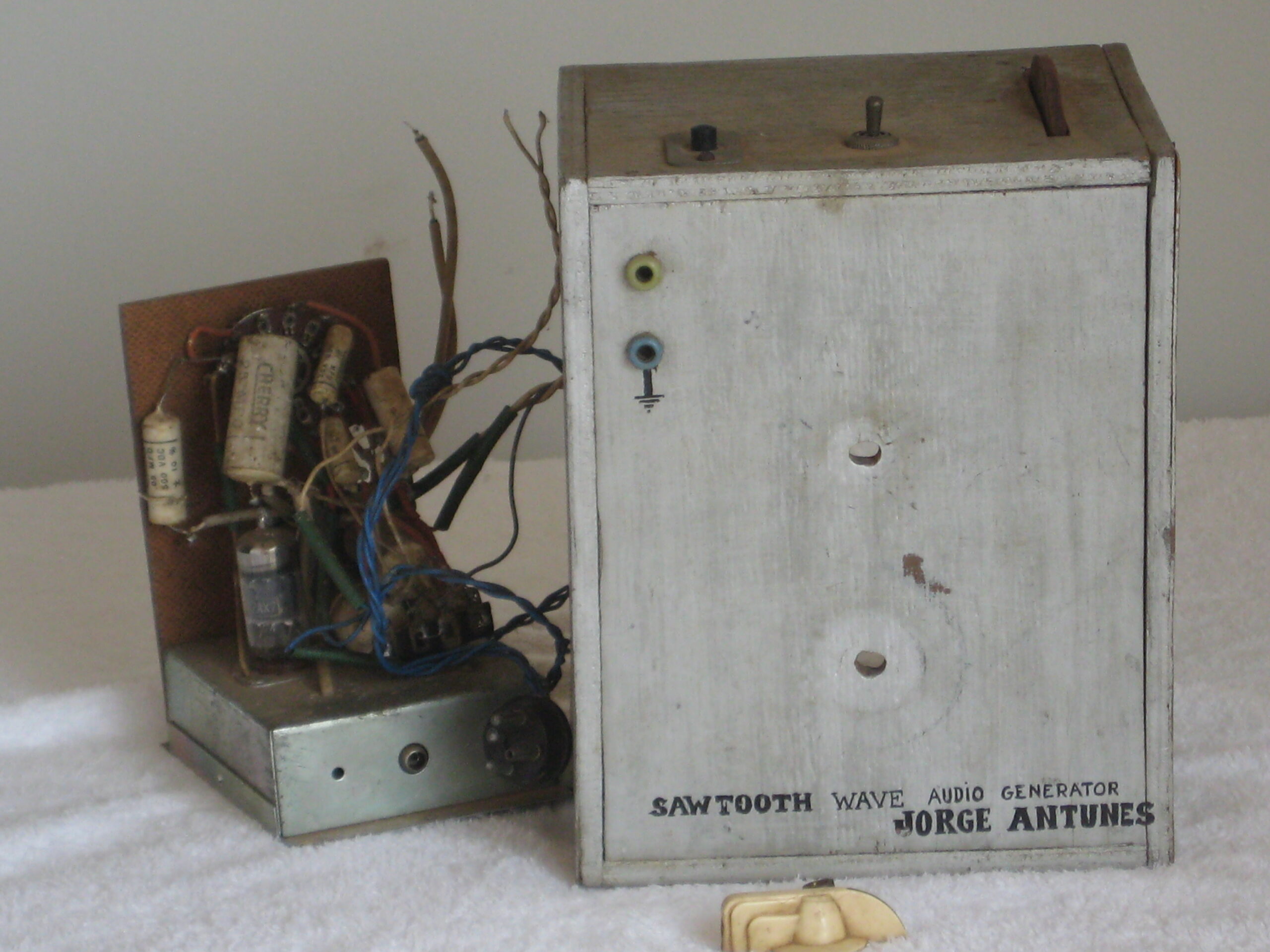
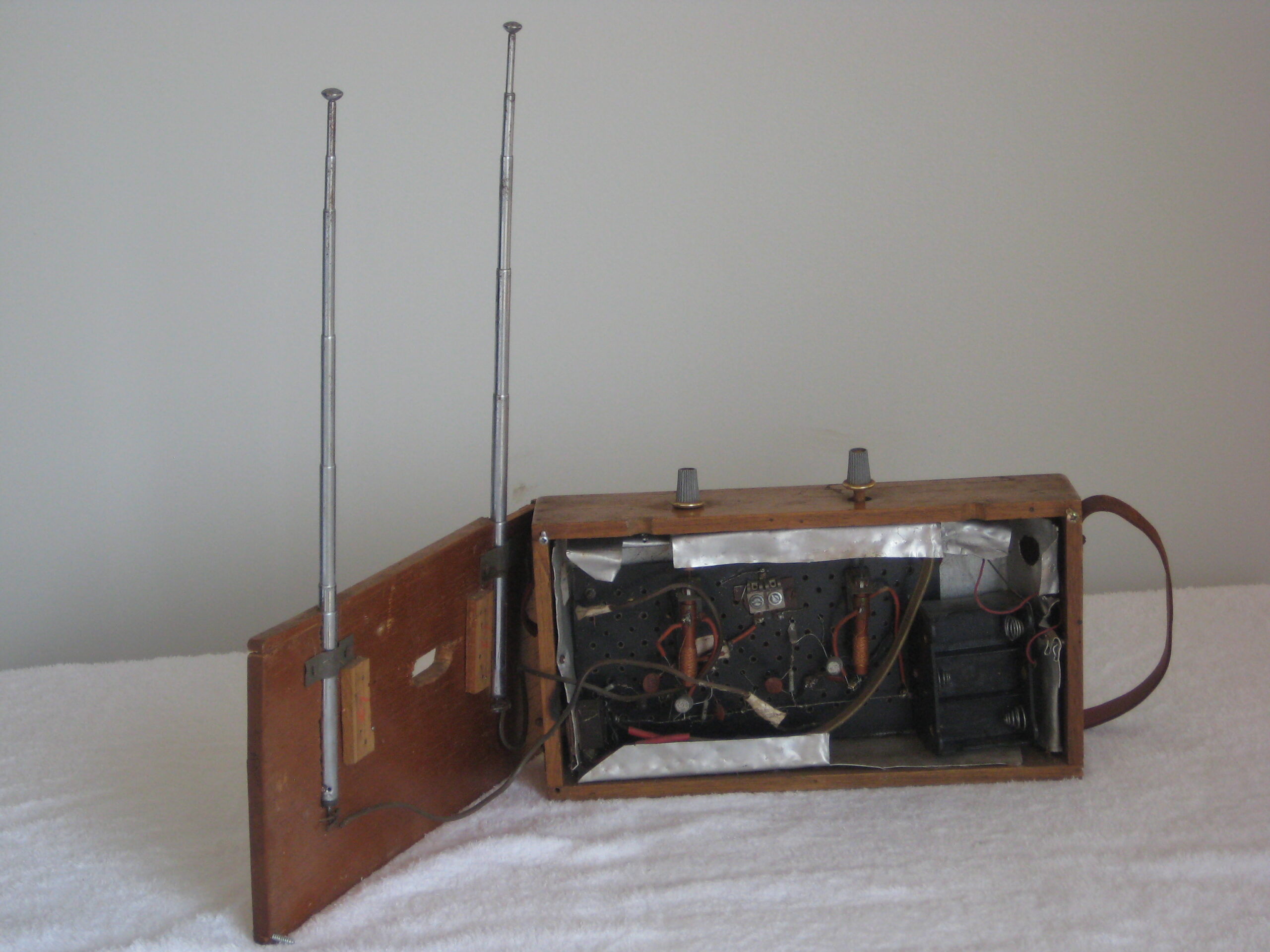

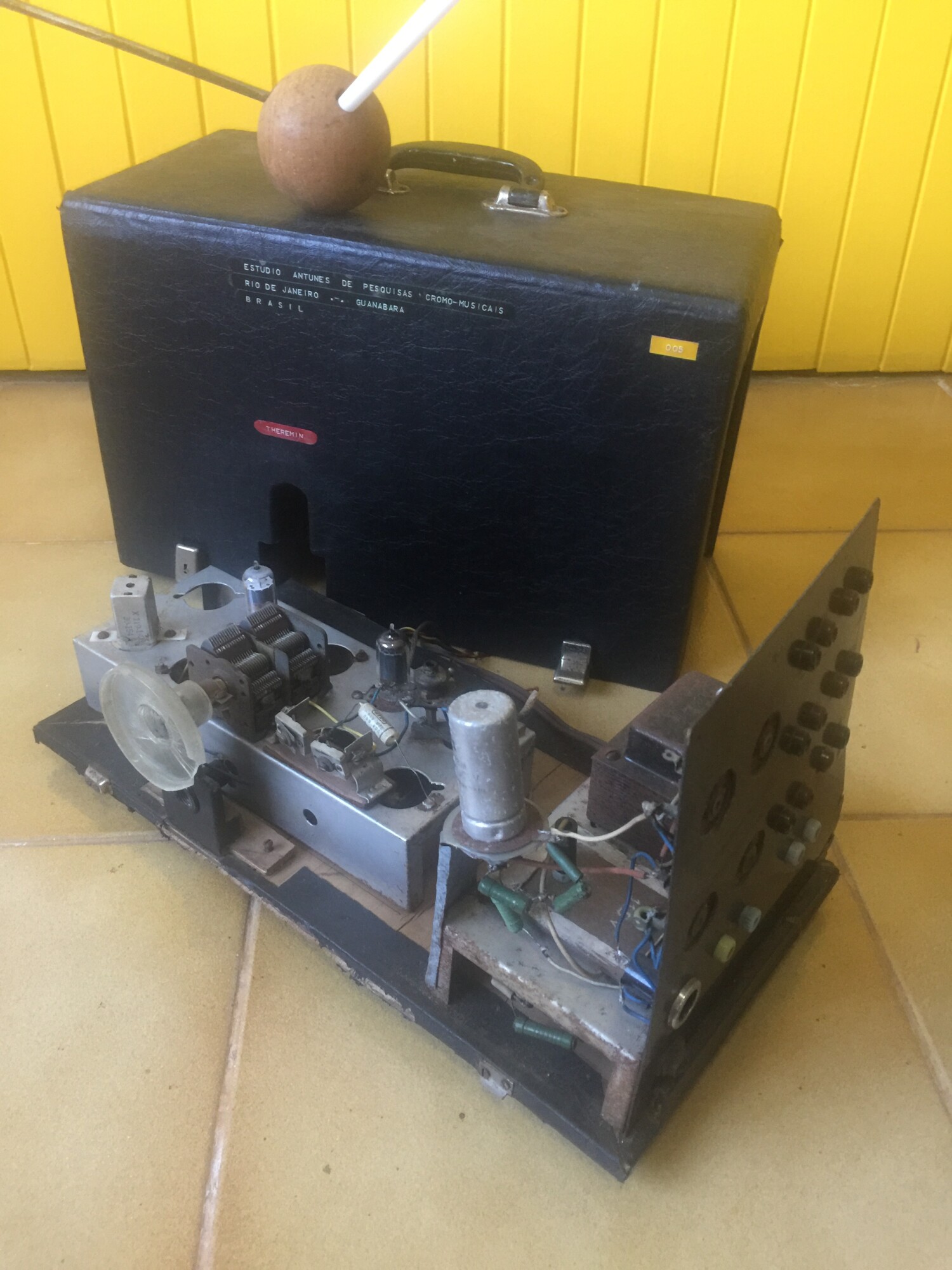


Did studying violin had any influence on you and who you become as a musician?
Certainly yes. It was thanks to studying the violin that I had the opportunity to write my first compositions for this instrument and then study and get to know the vast traditional repertoire of string quartets and chamber music in which the violin is a strong presence.
How did you first get interested in electroacoustic music?
The moment when I started to be interested in electroacoustic music has the exact date: September 21, 1961. I was 19 years old, studying the violin and already composing, as I said before, as a self-taught person. It was a Sunday, one of the “Concerts for Youth,” a series promoted by conductor Eleazar de Carvalho, which took place at the Theatro Municipal in Rio de Janeiro. It was a unique electronic music concert featuring works by Stockhausen, Henry Pousser and others. I was fascinated by that new world of sound.
At the age of 15, in 1957, I won a scholarship to study radio technology at LART (Laboratório de Rádio Técnica), a school owned by my mother’s cousin. There I learned to read and assemble radio and television electronic circuits. So, since then I worked with electronics, as a technician, repairing radio and television receivers.
Right after the electronic music concert I attended in September 1961, when I got home I started experimenting with recording and mixing electronic sounds that I had available. In my oscilloscope circuit I had a sawtooth wave generator. This sound material and the small Grundig tape recorder that I had were enough for me to start getting involved in creativity using that new sound world.
I started cutting and splicing pieces of magnetic tape using transparent adhesive tape. It was only a year later that I found out that there was a special tape for this on the specialized market: the splicing-tape. In October and November of that year, 1961, I composed a work that is now considered a pioneer in the field in Brazil: “Pequena Peça para Mi Bequadro e Harmônicos”. In it I used electronic sounds mixed with piano sounds. In the following year, 1962, I composed ‘Valsa Sideral,’ totally and exclusively with electronic sounds.


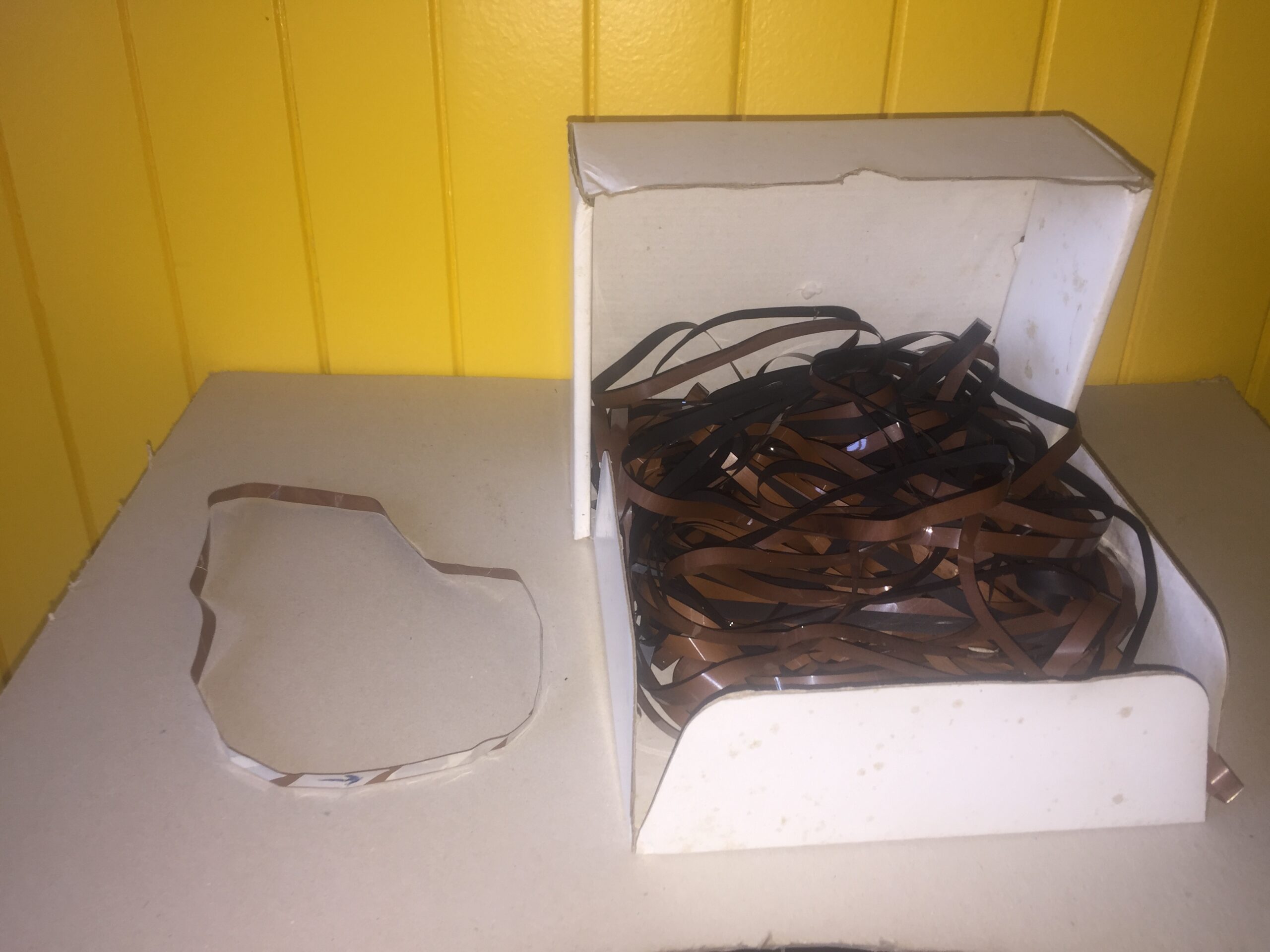
Do you have a phD of electroacoustic music?
My doctorate is in Musical Aesthetics, which I completed in 1977 at the University of Paris VIII, under the guidance of Daniel Charles.
The irony of fate is that, before pursuing formal studies in electroacoustic music, I was an electroacoustic music teacher.
Between 1966 and 1968 I taught the first electroacoustic music course held in Brazil. It was at the Villa-Lobos Institute in Rio de Janeiro.
I studied and practiced electroacoustic music in professional studios from 1969 onwards. First in Buenos Aires, Argentina, at CLAEM (Centro Latinoamericano de Altos Estudios Musicales) of the Instituto Torcuato Di Tella, with Francisco Kroepfl. Then I studied Computer Music, on a Dutch government scholarship, in Utrecht, Netherlands, at the Sonology Institute of Utrecht University, with Gottfried Michael Koenig, Stan Tempelaars, Jaap Vink and Greta Vermeulen. Then in Paris at the GRM (Groupe de Recherches Musicales), with Guy Reibel, Pierre Schaeffer, François Bayle and Michel Chion).
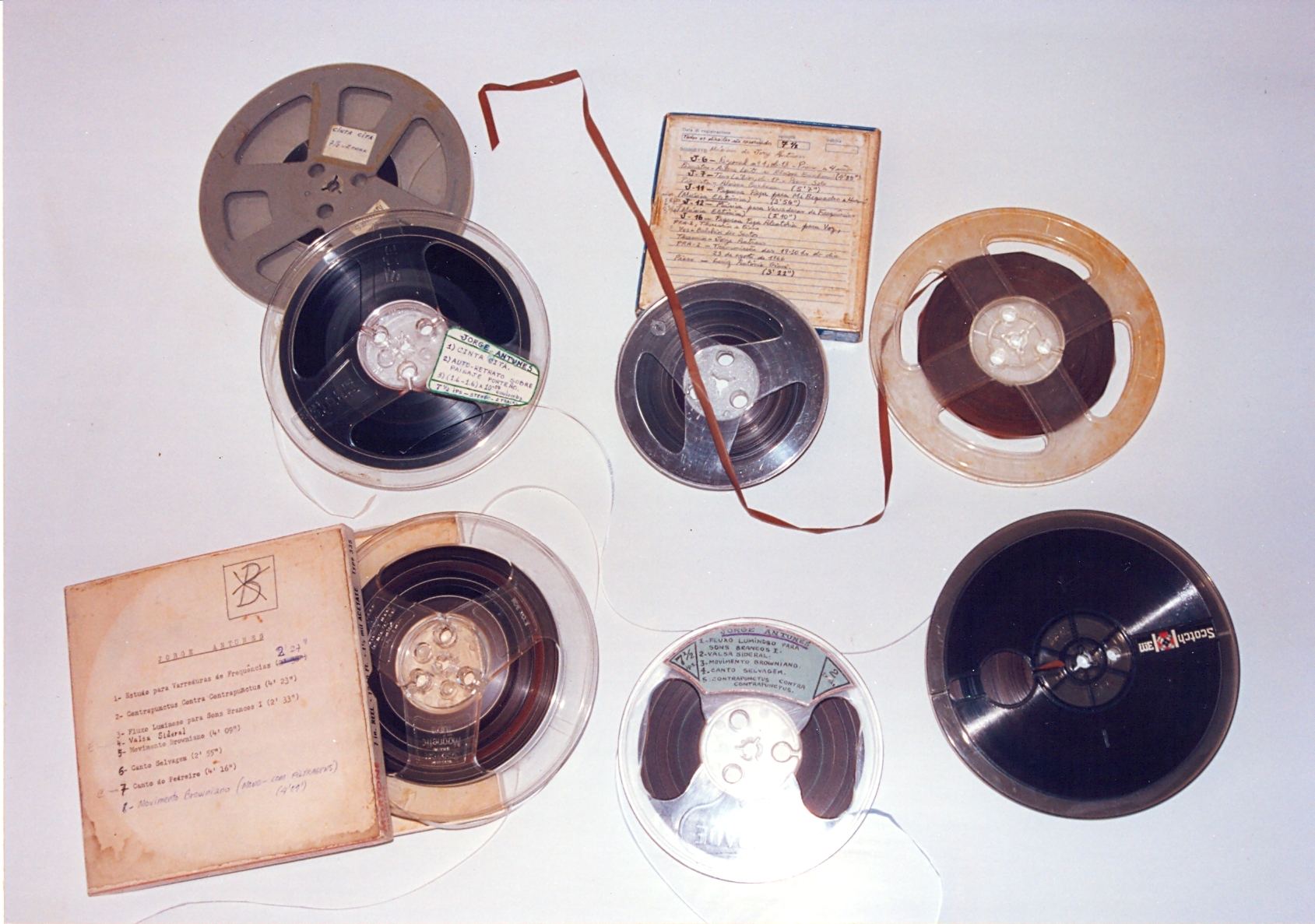
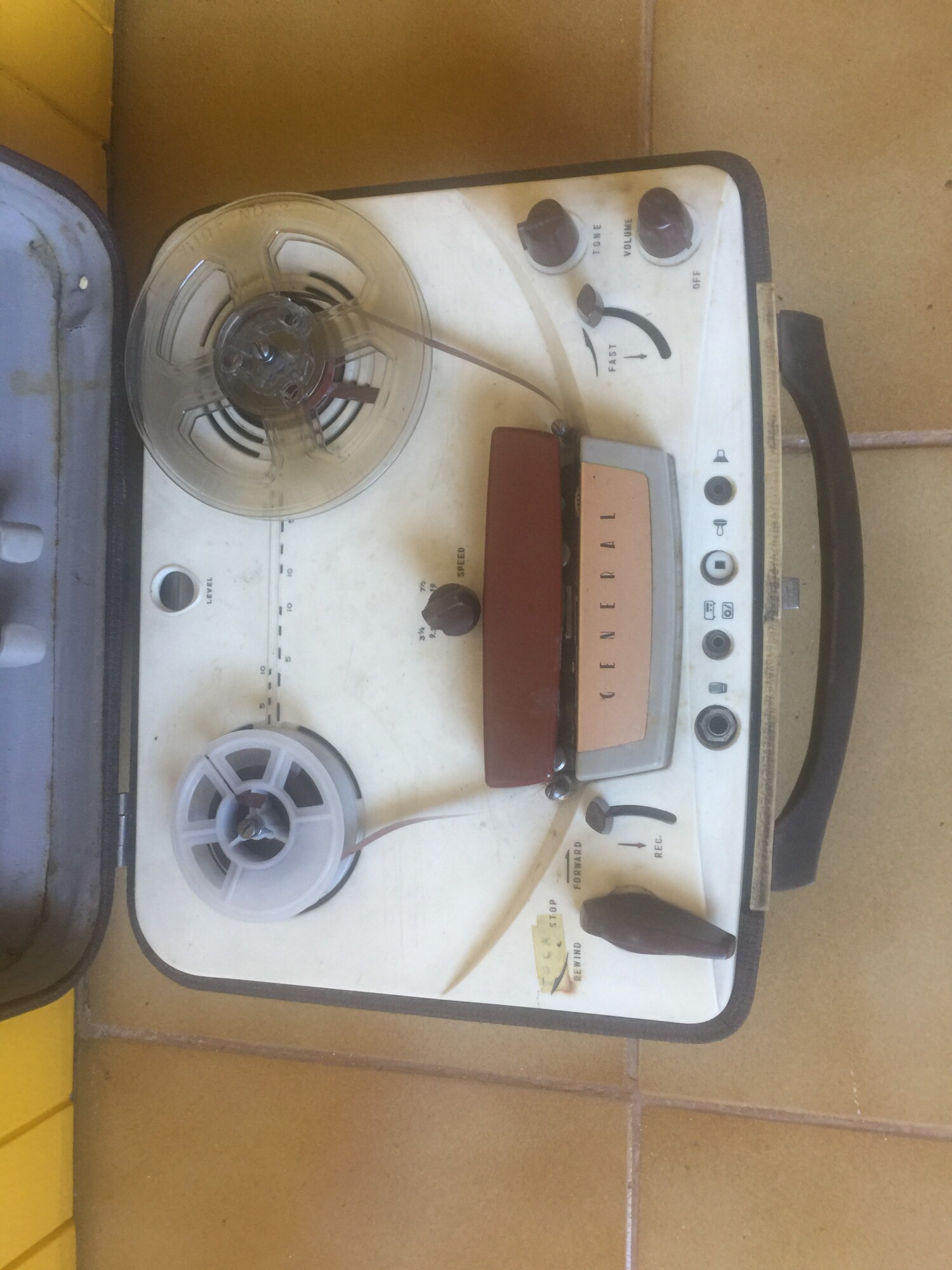

You stayed at college and began teaching. What was that like for you?
I left Brazil in March 1969 because I was being persecuted by the military dictatorship. Since high school, at Colégio Pedro II, between 1953 and 1960, I was intensely involved in student politics. Then I enrolled in two higher education courses at the University of Brazil (currently UFRJ): a bachelor’s degree in Physics and courses in violin, composition and conducting.
At the time, between 1962 and 1968, assuming student leadership, adopting left-wing ideology, I was president of the Academic Board of the School of Music, where I led an important student strike, denouncing the interference of the military in student life and politics. We fought the so-called “Suplici Law”, which ended student representation in university collegiate bodies.
Then, at the FNFi (National Faculty of Philosophy), where I was studying Physics, I participated in the creation of a Communist Party cell at the University. The party was underground at the time.
Some time later we found out that there were military spies infiltrated, recording all my actions and following my steps.
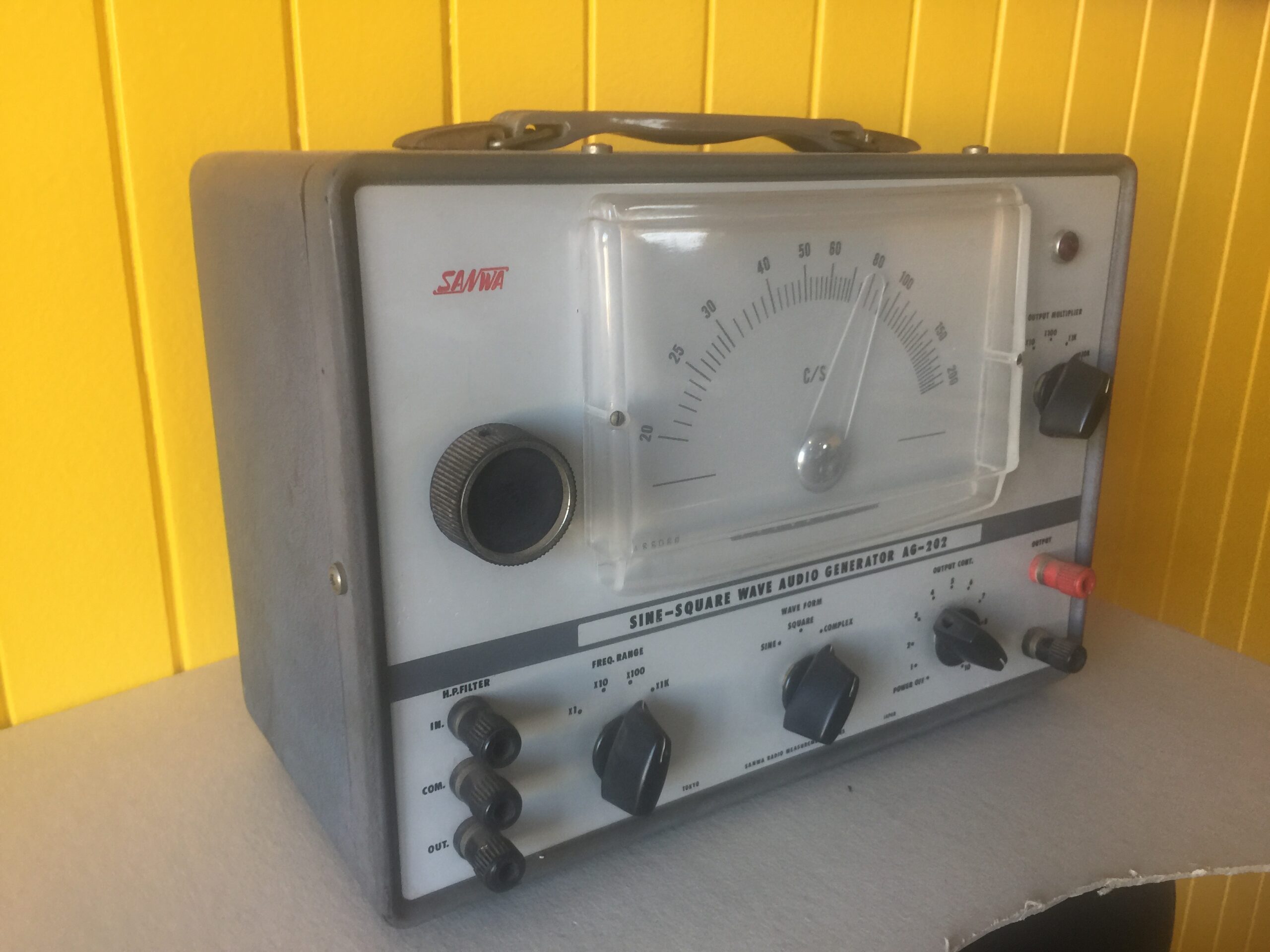
“Being my friend or being close to me was dangerous for them.”
The consequence was the registration of my name in the SNI (Serviço Nacional de Informação). The military coup took place in 1964, but in December 1968 there was a coup within the coup, with new, hard-line, extreme right-wing soldiers taking power. That was when the leftist guerrillas began, with the military carrying out a lot of repression, arrests, torture and assassinations.
In December 1968 I was dismissed, for political reasons, from my position as a professor at the IVL (Villa-Lobos Institute). Friends turned away from me. Being my friend or being close to me was dangerous for them.
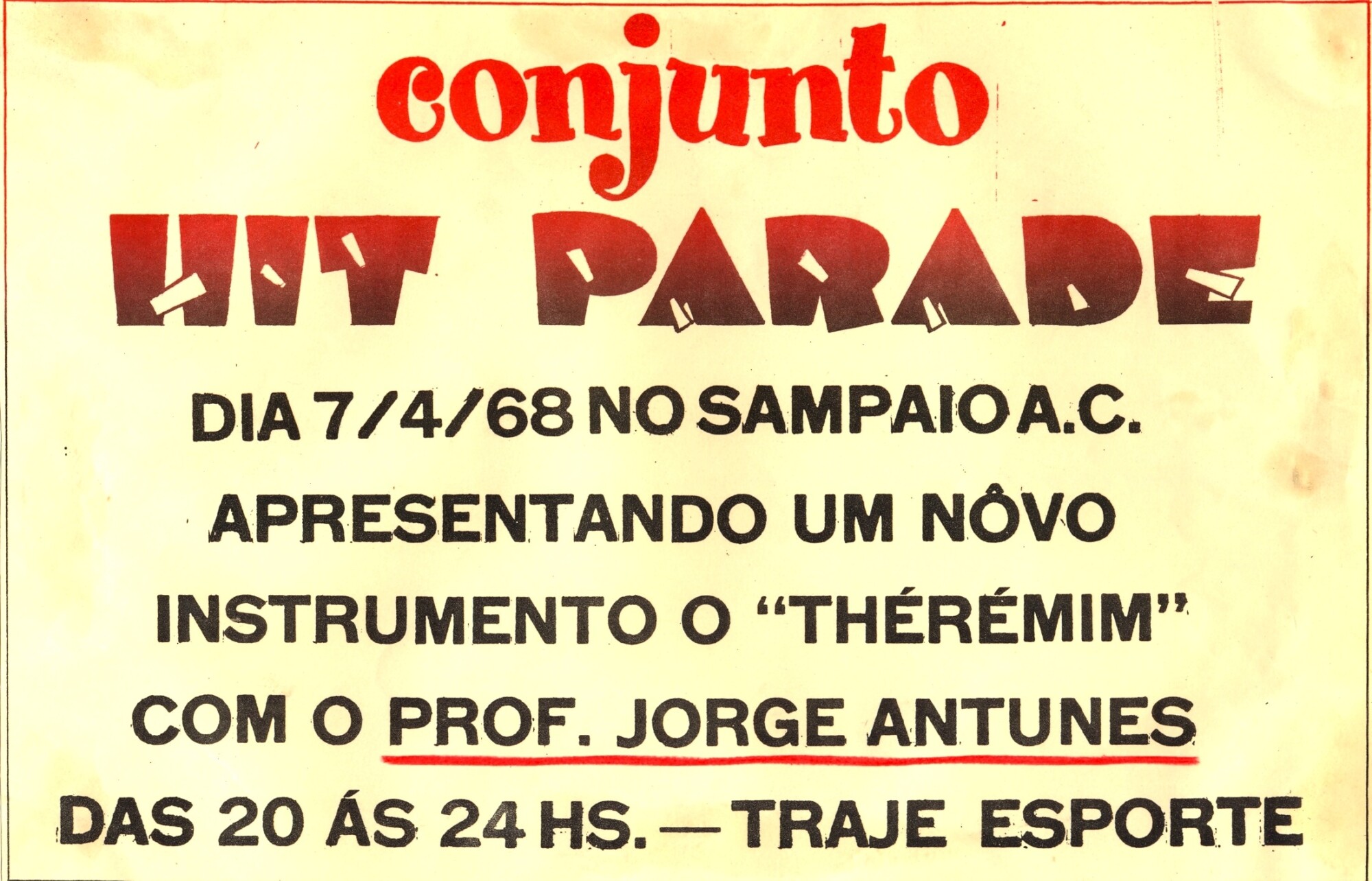
At the same time, I won a contest in Buenos Aires, which offered a scholarship to study at the Instituto Torcuato Di Tella, which was directed by the composer Alberto Ginastera. Mariuga and I, then my fiancée, decided to get married, and we traveled to Buenos Aires. The flight from Brazil, on a CAN (Correio Aéreo Nacional) plane, was somewhat wild, with the support of Mariuga’s father, who was a dentist and colonel in the army.
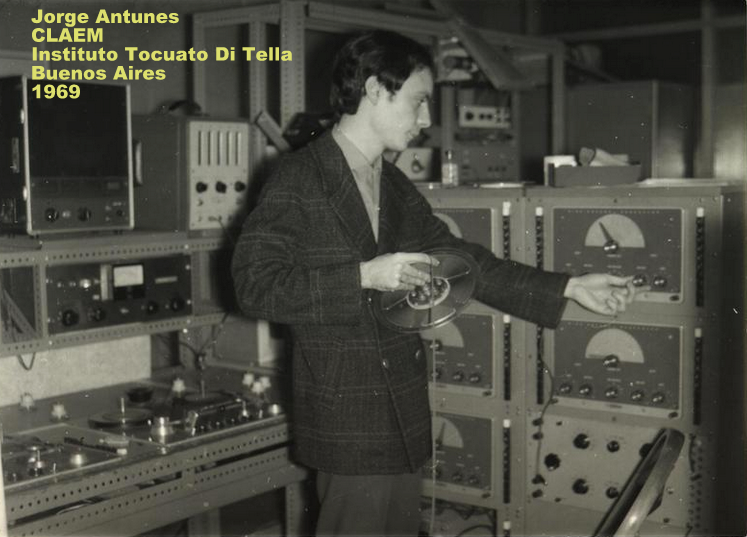
Anyway, I actually taught for 3 years at the Villa-Lobos Institute, teaching electroacoustic music. It was an innovative course, unique in Brazil at the time, in which I passed on the teachings I had acquired on my own, as a self-taught person. At the French Alliance, an agency linked to the French Embassy in Brazil, I managed to get recordings of all the recent productions by Pierre Schaeffer, Luc Ferrari, Michel Philippot, Pierre Henry and others, in addition to recent works by Stockhausen, Koenig, Berio, et cetera. I gave theoretical classes, analyzing the works of these European composers, I dealt with history from the first experiences of Thaddeus Cahill, Leon Theremin and others, and I gave practical classes, teaching how to capture sounds, cut and splice magnetic tapes.
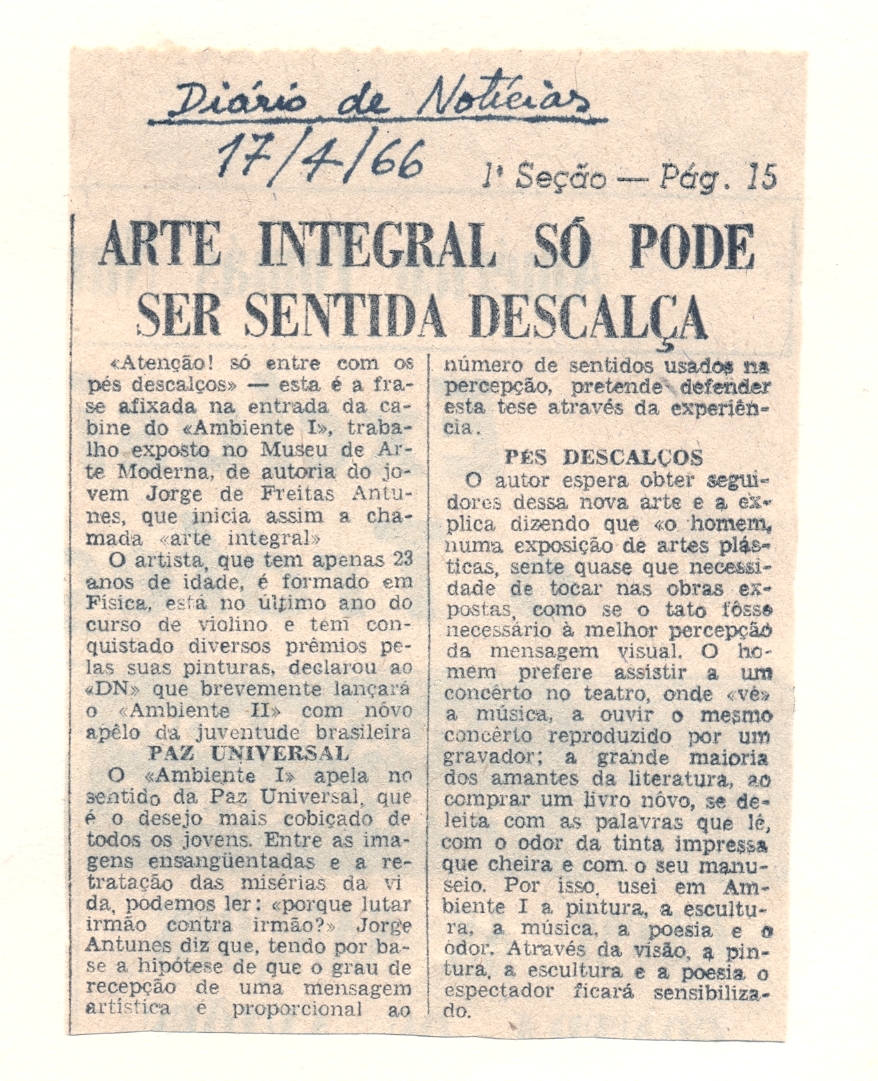
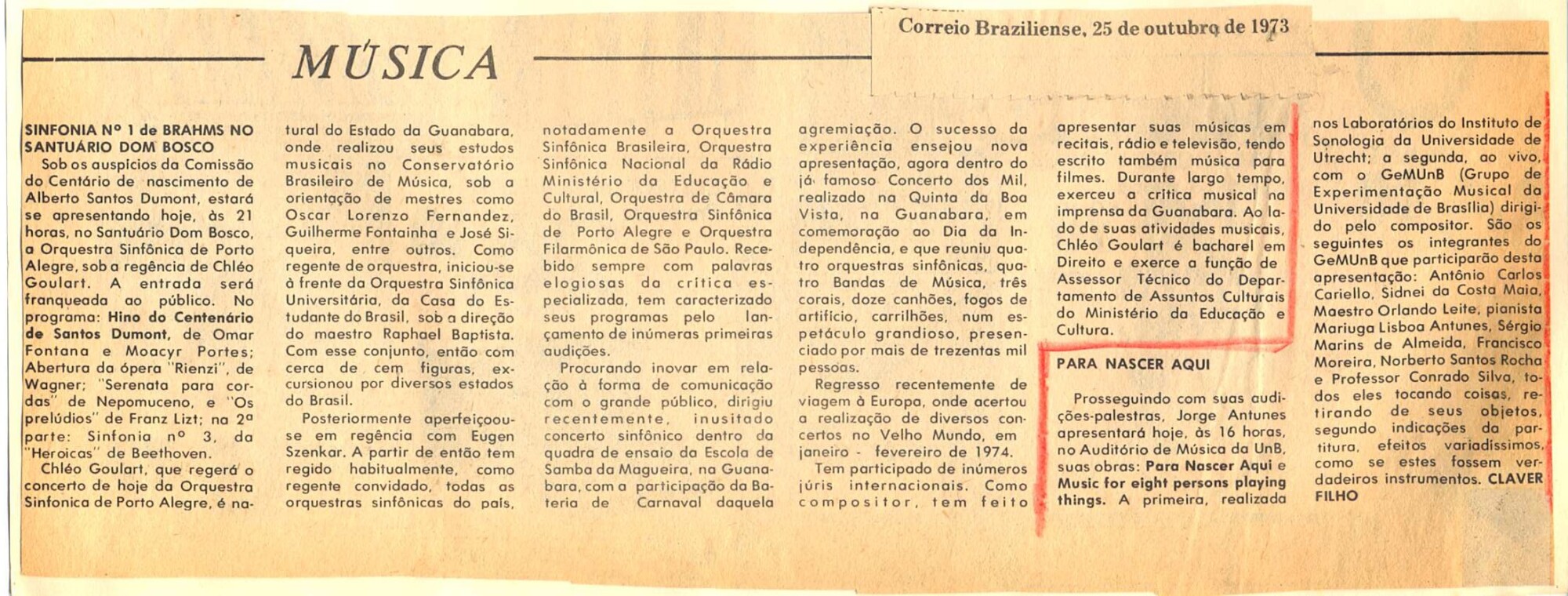
From 1969 I became a kind of “professional” in scholarships. Since I couldn’t return to Brazil, when the end of a scholarship approached, I tried to look for another scholarship in other countries. At the end of the course in Buenos Aires, I won a composition contest in Italy: the Città di Trieste Prize, with the work “Tartinia” for violin and orchestra. At the same time I won a scholarship from the Dutch government to study at the Institute of Sonology at the University of Utrecht. Then I traveled to Italy and, after the award concert, I went to Holland. My first son, Mauritz, was born in Utrecht in 1971.
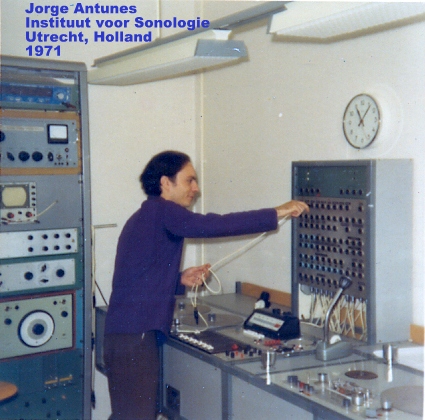
This situation, with a wife and small child, became a difficult problem to manage due to the financial issue, as the values of the financial grants were very low. But I was very lucky, because in that period I won many composition contests that offered cash prizes. I also won the Angelicum di Milano Prize, with the work ‘Isomerism’. In addition to the good cash prize, the work was published by Edizioni Suvini Zerboni, who even started to publish all my works. This editor helped me a lot.
In June 1973, I was still in Paris on a scholarship from the French government, when I received an invitation from the University of Brasília (UnB). I was starting my doctorate at the Université de Paris VIII. My friend, maestro Orlando Leite, had assumed the leadership of the Department of Music at UnB, and wanted to complete the staff of professors. There was a lack of a Music Composition teacher. So I came to Brasilia, suspending my enrollment in the doctorate in Paris.
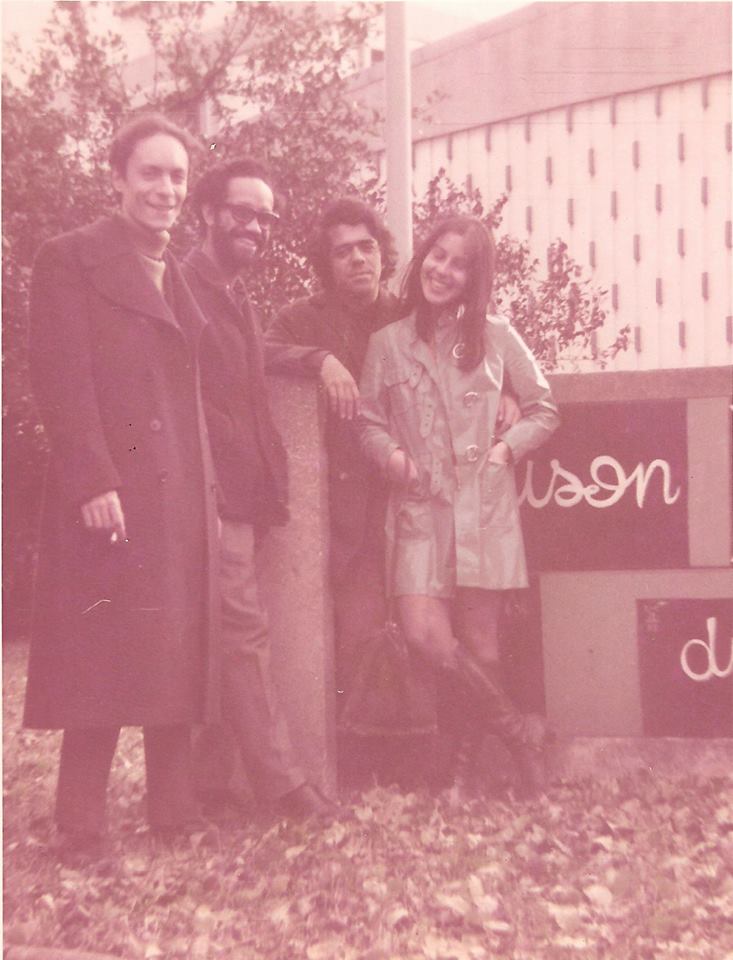
At UnB, then, I was hired as a professor, and there I taught from 1973 until 2011, when I retired. I didn’t just teach Composition: I also taught Counterpoint and Fugue, Musical Acoustics and Musical Prosody.
As soon as I arrived at UnB, in June 1973, I created a contemporary music group, made up of 4 professors and 5 advanced students. It was the GeMUnB (Musical Experimentation Group of the University of Brasilia), formed by 7 instrumentalists, a singer and a dancer.
Our repertoire included works of contemporary music that were not yet known in Brazil, by Terry Riley, Tomás Marco, John Cage, Luiz de Pablo, and also works that I wrote especially for the group. In some of these works I used an analog synthesizer, to process the instruments in real time: a Sinthy A, by EMS.
In 1975 I toured Europe with GeMUnB, playing in Rome, Como, Amsterdam, Brussels, Paris, London, Lisbon and Madrid. We recorded works of mine at the BBC in London. At the RAI in Rome we recorded a work by Azio Corghi.
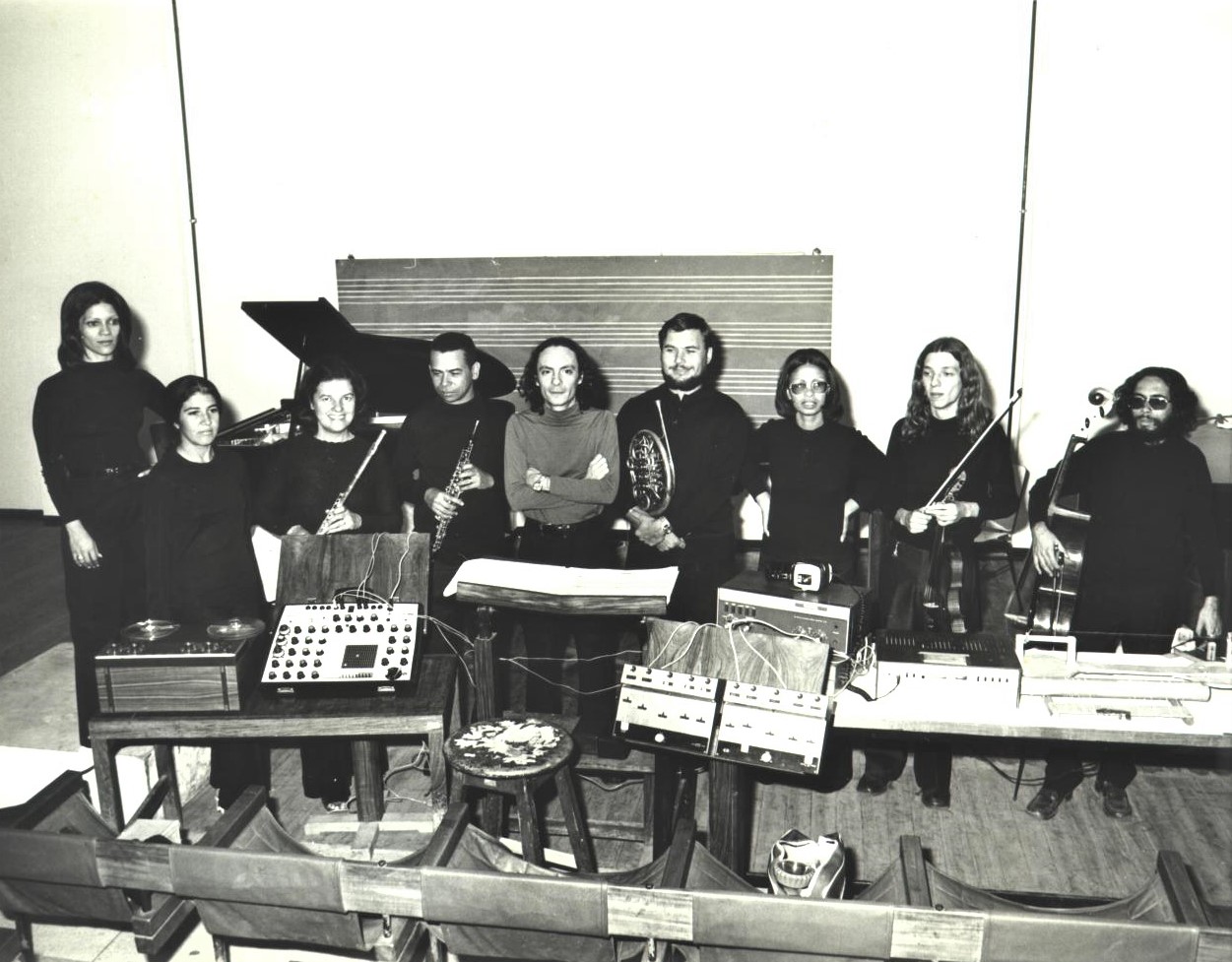
In 1976 and 1977 I received a license from UnB and returned to Paris to finish my doctorate.
Upon returning, GeMUnB ended. The advanced students who made up the group had already graduated and were hired to teach at the University of Goiânia and the University of Piauí.
At UnB I was very happy with all the results of my work, as I trained good musicians and some composers. At UnB I directed the Laboratory of Electroacoustic Music, and organized many concerts that spread recent contemporary music, inside and outside the campus.
During the 38 years of work at UnB, I always had the support of the deans and directors, to travel when necessary. So, almost every year I traveled abroad to participate in international festivals and concerts. I had works selected at several SIMC Festivals (ISCM Festival), and I always traveled to participate in major events and conferences.
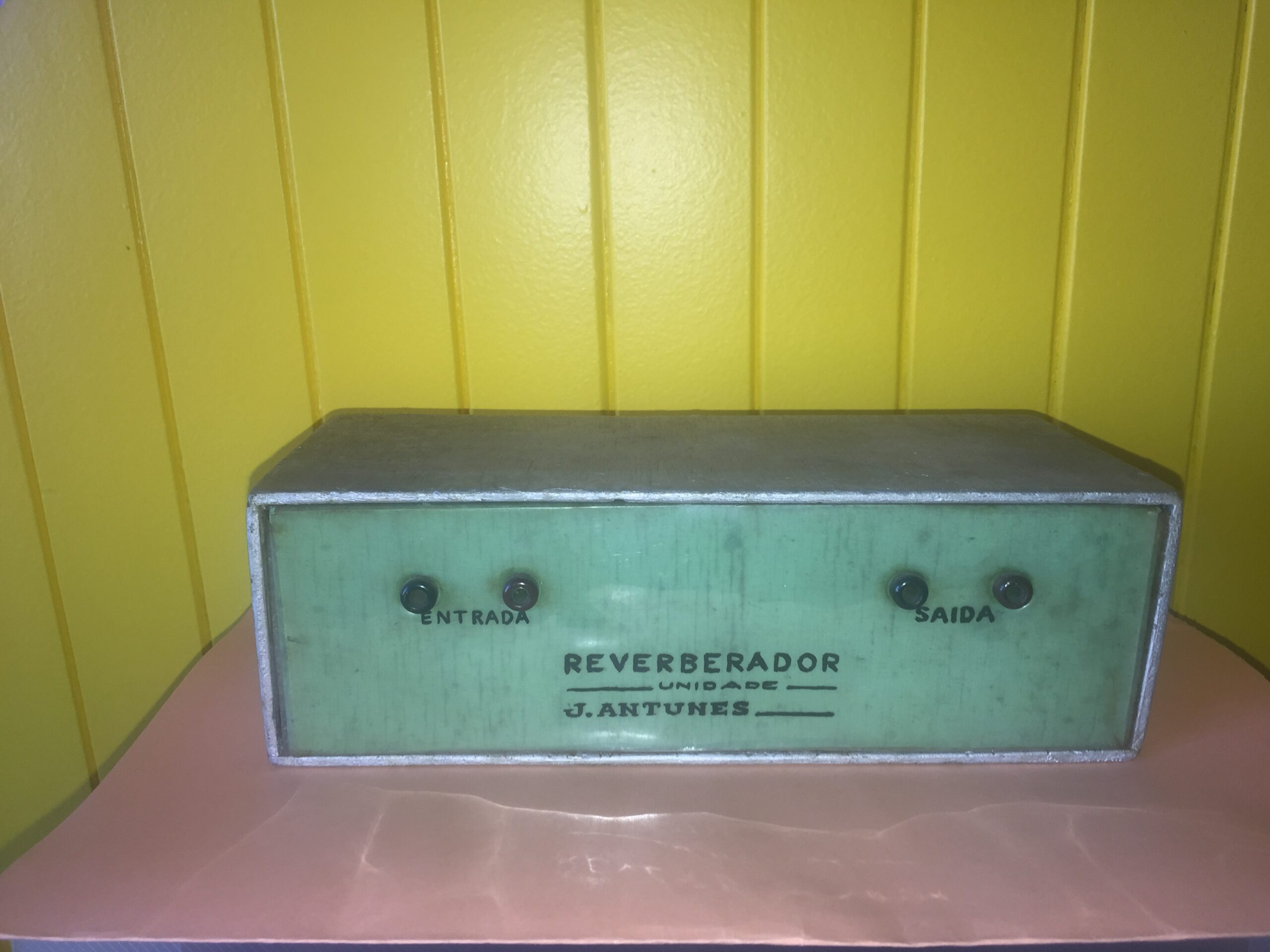
‘Música Eletrônica’ is considered the first electro-acoustic / electronic album made in Brazil. It features tracks recorded between 1962 and 1970. Tell us about the recordings. What kind of techniques did you use?
This LP was published in 1975 by Editora Mangione in Rio de Janeiro. It is a traditional, old publishing house, which has edited the biggest names in Brazilian popular music since 1920. The disc contains a compilation of my first electronic music compositions, covering the period from 1962 to 1970. It does not include the first electroacoustic work I made, in 1961, titled ‘Pequena Peça Para Mi Bequadro E Harmônicos’. It didn’t fit the vinyl. The Brazilian Academy of Music and Mode Records published, in 2002 and 2004, CDs with the same works on vinyl, with the addition of the ‘ Pequena Peça Para Mi Bequadro E Harmônicos’ and works I did later in Holland and Paris. The CD holds more songs.
I, at the time, 1974-1975, sent a proposal to several recording companies. All replied saying they were not interested. Until the composer Francisco Mignone attended a concert with my electronic music works, in the Leopoldo Miguez Hall of the School of Music. He loved my job. Afterwards, talking to him, the maestro suggested that I send the proposal to Mangione, who edited his records. It worked out. The LP was very successful, soon selling out. Recently it was reissued in Spain, by the Guerssen label.
We can find early pieces like ‘Valsa Sideral’ (1962), on which Antunes uses artificial echo and reverberation by feedback between the recording heads to create the first Brazilian work consisting only of electronic tones.
‘Auto-retrato sobre paisaje porteño’ (1969 / 1970) is an amazing piece of early turntablism on which Antunes “samples” an old tango vinyl record found at a flea market, using it as a loop and for sound effects / manipulation, adding a different, “electronic dance” version to it, mixed with electronic sound effects and cut voice manipulation / sound poetry. It sounds years ahead of its time and it’s a precursor to the dance / downtempo music from the following decades. The version included here, features the audio collage which Antunes created to criticize the military regimes from Brazil and Argentine and which wasn’t used on the original LP to avoid any problems with censorship.
‘Cinta Cita’ (1969) was the first piece recorded by Antunes at a professional studio. Pure electronic sounds and pulsating rhythms using filtered noise and synthetic sounds created by additive synthesis.
‘Contrapunctus versus contrapunctus’ (1962) was created using tape splicing, micro-assemblies and tape manipulation.
‘Historia de un Pueblo por Nacer or Carta Abierta a Vassili Vassilikos y a todos los Pesimistas’ (1970) with its sinoidal sounds and low frequencies was inspired by the plot of the novel and film “Z” by Vassili Vassilikos. In the original audio of this work, Antunes used a quotation from the International Communist anthem. To avoid problems, he cut that passage for inclusion on the original LP. But you’ll find here the uncensored, original version. (guerssen.com)
As you will see, each song was made at a different time, each in a different studio, and for that reason, each song used different techniques and resources.
The works ‘Valsa Sideral’ and ‘Contrapunctus contra Contrapunctus’ were composed in my private studio in Rio de Janeiro, with very limited resources and amateurs. I used a lot of tape cutting and splicing, echo and reverb effects with interconnecting the two tape recorder heads, closed tapes (loops), the sawtooth wave generator I built in 1961, and the theremin I built in 1962.
The other works, ‘Cinta Cita,’ ‘Auto-retrato sobre paisaje porteño’ and ‘Historia de un Pueblo por Nacer or Carta Abierta a Vassili Vassilikos y a todos los Pesimistas,’ I composed at the Torcuato Di Tella Institute, in Buenos Aires, in a professional studio, using professional filters , ring-modulator, sound synthesis, loops, plate reverb, follower envelope and, of course, a lot of tape cutting and splicing too.
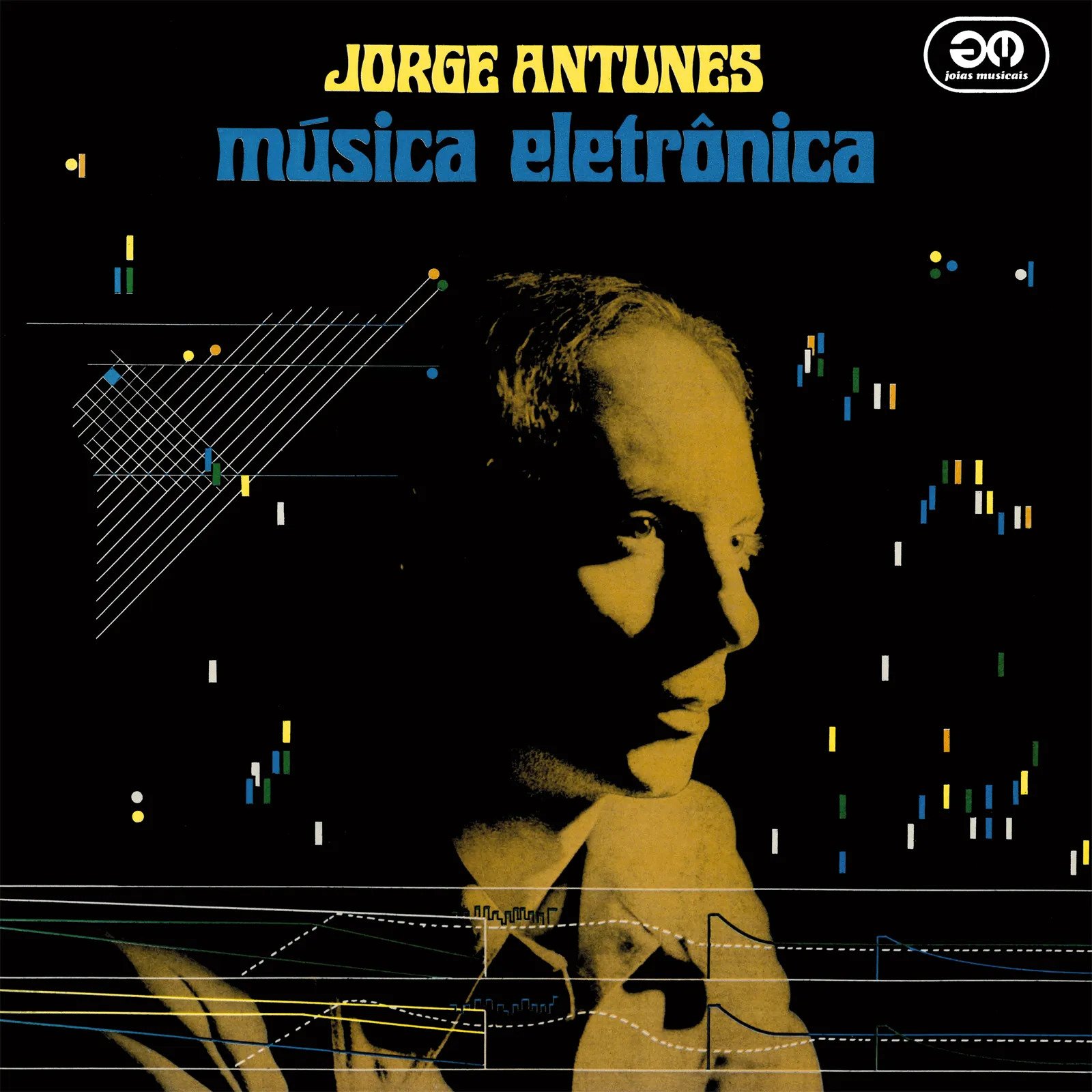
What would you say influenced you the most at the time? Some of those recordings date back to 1962?!
I can’t say what influenced me at the time. When I made, in 1961 and 1962, the works Small Piece for ‘Pequena Peça para Mi Bequadro e Harmônicos’ and ‘Valsa Sideral,’ I knew nothing of the French pioneers and nothing of the German pioneers. My influence came from what I heard at the September 1961 concert: a work by the Belgian Henry Pousseur.
The works I did in Buenos Aires, in 1969 and 1970, had several influences, from works by Latin Americans Cesar Bolaños, Gabriel Brncic and Francisco Kroepfl, to works by Europeans Pierre Henry, Pierre Schaeffer, Stockhausen, Kotonsky and others.
Would you share your insight on the albums’ tracks?
My view today of those works is one of great satisfaction and joy, because they contain a beautiful naivety, a strong authenticity and an admirable pioneering boldness. I came to qualify that aspect as belonging to an “aesthetics of precariousness.” Without professional resources, without any institutional support, I built the small devices, all valves with the resources of the old electronics of the 1960s, working with amateur roller recorders, and managed to make new music.
I didn’t have the financial resources to buy virgin magnetic tapes, and used tapes that were already used, which I got at the French Embassy, with radio programs from the ORTF, I erased them and reused them. Erasing the tapes wasn’t perfect, because the original recordings were “full track,” and my tape recorders’ heads didn’t reach the entire surface of the tape to erase. Thus, sometimes there was background noise, a hum, or a shadow of the French recordings. So I appropriated those phantom sounds, and integrated them into my music.
You have a very extended discography, would you like to highlight some of the works you are most proud of and why?
In fact, I’m proud of them all. But, yes, there are some that I have a special passion for. I can mention the work “Insubstituivel Segunda,” from 1968, for cello and electronic sounds, the work ‘Para Nascer Aqui,’ an electroacoustic piece I made in Utrecht in 1971, and the work ‘Elegia Violeta para Monsenhor Romero,’ from 1980, for two solo children, children’s choir, piano and orchestra. The reasons that lead me to quote these works are merely affective, because they were composed in very special moments of my life. Moments of great love, passion and pain.
What currently occupies your life?
Currently what occupies me continues to be musical composition. I compose a lot of electroacoustic music, chamber music and operas. At the moment I’m writing a new opera: ‘Marielle’. The libretto is also mine, and is based on the life, struggle and cruel murder of Brazilian black leader Marielle Franco, which took place in 2018 in Rio de Janeiro. This opera will have its world premiere in Brasilia in October 2023, and will have new performances in São Paulo in 2024.
Of course, there are other things that occupy me besides music composition. For example, taking care of the chickens and the couple of ducks that I have in the green area of my house, and also of the little fish in the water mirror. From time to time I also paint a picture, write a poem, a short story, an article and a book. Now I’m finishing a dictionary, with all the expressions used in Latin American music: musical genres, songs, instruments, technical terms, folklore expressions, et cetera.
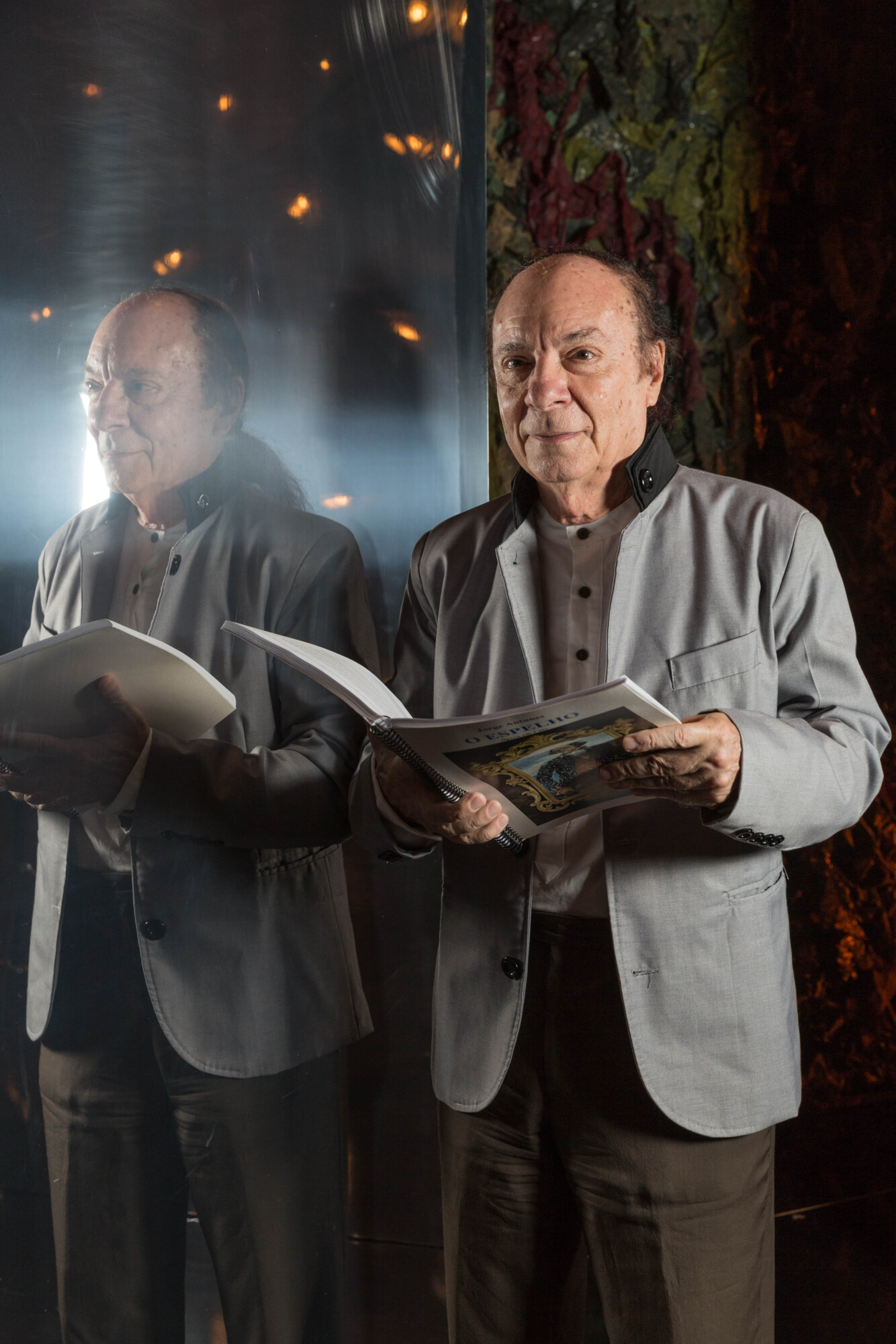
Is there any unreleased material you would like to see being released?
Yes. I can mention my opera ‘Leopoldina,’ which I composed in 2020-2021 and which is unpublished. It was commissioned by a Brazilian company, Icatu Seguros, which awarded me a prize (Prêmio Icatu 2020), financial scholarship for two years and residency in Paris, just to compose the opera.
The plot of the libretto tells the life story of the Archduchess Princess Leopoldina Habsburg who was married by proxy, in 1817, with the Portuguese Prince D. Pedro de Bragança at the time of Brazil as a colony of Portugal. The plot takes place in Rio de Janeiro, where Empress Leopoldina assumes a true spirit of Brazilianness, defending the Brazilian people, culminating in the great historic act in which she signs, on September 2, 1822, a decree declaring Brazil independent from Portugal . Five days later, D. Pedro, in São Paulo, endorsed the decision, in the historic episode of the Grito do Ipiranga.
The music in this opera of mine is eclectic, because in it I use a large orchestra and chorus in languages that cover the atonal, the electronic, the neotonal, the modal, and even the language of Brazilian popular music.
It was expected that the premiere of the opera would take place in 2022, in the celebrations of the Bicentennial of the Independence of Brazil. But the pandemic did not allow this.
Klemen Breznikar
Headline photo: Jorge Antunes in 1967 in his studio at the IVL (Villa-Lobos Institute, Rio de Janeiro).
Jorge Antunes Official Website / Facebook

